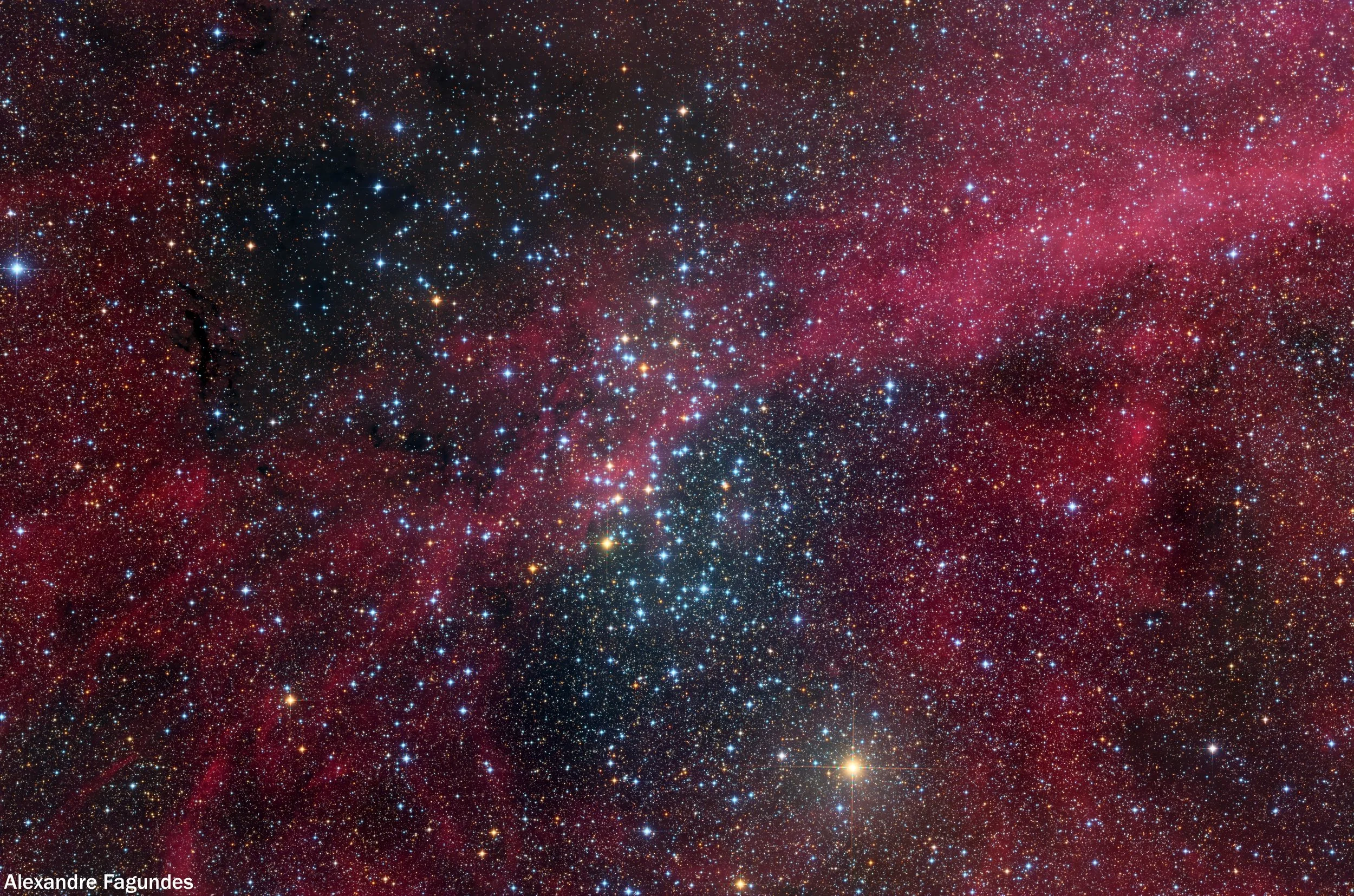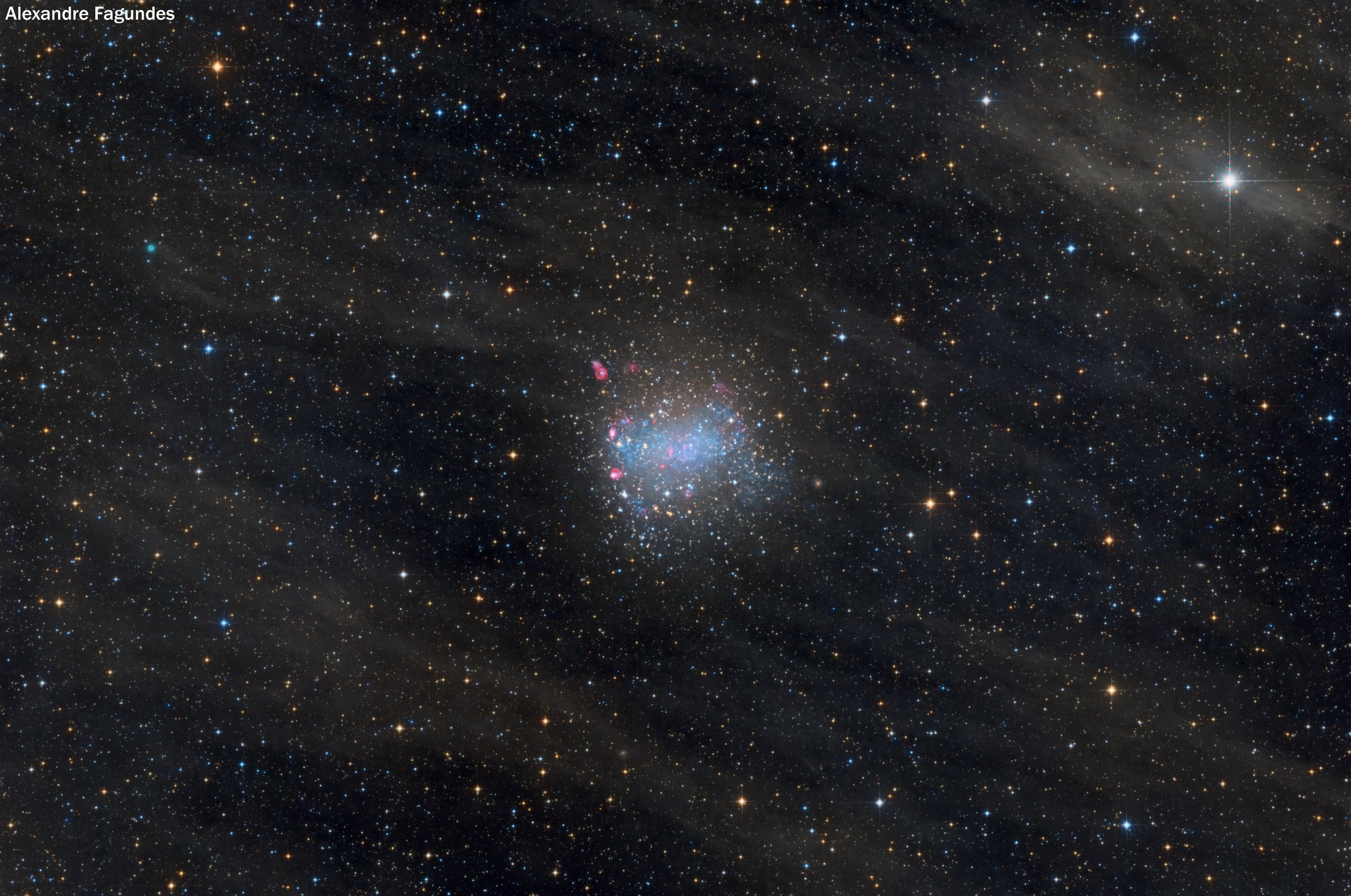
AAPOD2 Image Archives
Ptolemy's Cluster in LRGB (M7 or NGC 6475)
Ptolemy's Cluster, also known as M7 or NGC 6475, is a magnificent open cluster located in the constellation Scorpius. This image showcases the cluster in stunning LRGB, highlighting the rich, colorful expanse of stars. The dense star field is truly unbelievable, with countless stars packed closely together, creating a mesmerizing tapestry of light.
Among the myriad stars, the prominent blue stars of Ptolemy's Cluster stand out vividly. These hot, young stars are a defining feature of the cluster, illuminating the surrounding space with their intense brightness. Observing M7 offers a breathtaking view of one of the sky's most beautiful star clusters, a brilliant assembly of stellar youth set against the deep backdrop of the cosmos.
M41 (The Little Beehive Cluster)
Messier 41 (M41), also known as the Little Beehive Cluster, is an open star cluster located in the constellation Canis Major, about 2,300 light-years from Earth. This cluster is comprised of approximately 100 stars, including several red giants and numerous white dwarfs. Spanning about 25 light-years in diameter, M41 is estimated to be around 190 million years old, making it relatively young in astronomical terms. The cluster is easily visible to the naked eye under dark skies and provides a rich field of stars for telescopic observation.
In this image, M41 is complemented by the glow of hydrogen-alpha (Hα) emissions in the background, highlighting the interstellar medium surrounding the cluster. The Hα emissions, caused by the ionization of hydrogen atoms, add a vivid red backdrop to the scene, enhancing the visual appeal of the cluster. This combination of star cluster and nebula provides a stunning contrast between the hot, young stars of M41 and the cooler, diffuse gas of the surrounding nebula, offering a glimpse into the dynamic processes at play in our galaxy.
Wishing Well Cluster (NGC 3532)
Discover the Wishing Well Cluster, also known as NGC 3532, a dazzling open star cluster located in the constellation Carina. This celestial gem is situated approximately 1,300 light-years away from Earth, nestled within the rich star fields of the southern sky.
NGC 3532 earned its charming moniker due to its resemblance to a well filled with stars, evoking a sense of wonder and imagination. With an estimated age of around 300 million years, this cluster boasts a diverse population of stars, ranging from hot, young blue stars to cooler, older yellow and red giants. Its radiant glow and stellar diversity make NGC 3532 a captivating sight for stargazers and astronomers alike, offering a glimpse into the vibrant tapestry of the cosmos.
IC 5148 (Spare Tyre Nebula) Planetary Nebula
IC 5148, also known as the Spare Tyre Nebula, graces the cosmic stage in this captivating astrophotograph rendered in RGB (Red, Green, Blue) colors. Situated in the constellation Grus, this planetary nebula unveils its intricate details through a mosaic of stellar emissions and cosmic interactions.
The image showcases the nebula's inner regions with emissions predominantly in red, capturing the essence of ionized hydrogen. This region marks the culmination of a Sun-like star's life, shedding its outer layers to form the nebula's intricate structure. The interplay of green and blue hues, emanating from the surrounding oxygen-rich shells, offers a visual narrative of the star's complex death throes.
The Spare Tyre Nebula's distinct morphology, resembling a spare tire or donut, is a testament to the intricate interplay of stellar winds, radiation, and the surrounding interstellar medium.
NGC 55 in LHaRGB
Situated in the Sculptor constellation, NGC 55 boasts a rich scientific history, having played a crucial role in advancing our understanding of galactic evolution. Notably, it is one of the nearest galaxies beyond the Local Group, providing astronomers with a unique opportunity to study its features in greater detail. As we explore this galactic masterpiece, NGC 55 emerges not only as a captivating subject for scientific inquiry but also as a key player in the ongoing narrative of cosmic exploration.
The Barnard Galaxy (NGC 6822)
NGC 6822, affectionately known as Barnard's Galaxy, is a small, irregular dwarf galaxy situated in the constellation Sagittarius. Despite its modest size, this celestial gem has captivated astronomers with its intricate structure and stellar richness. Lying about 1.6 million light-years away from our Milky Way, NGC 6822 is considered a satellite galaxy of our own, orbiting the larger Milky Way. Its irregular shape is the result of gravitational interactions with its host galaxy. Within its boundaries, NGC 6822 hosts a diverse population of stars, from young, hot, blue stars to older, cooler, reddish stars, making it a valuable object of study for understanding the evolution of galaxies and the birth and life cycles of stars. This distant galaxy continues to reveal its secrets to astronomers and serves as a testament to the diverse and wondrous objects that populate our cosmic neighborhood.







